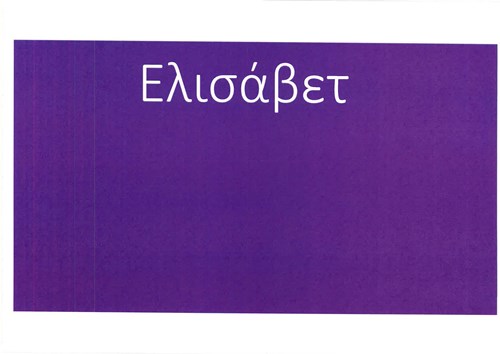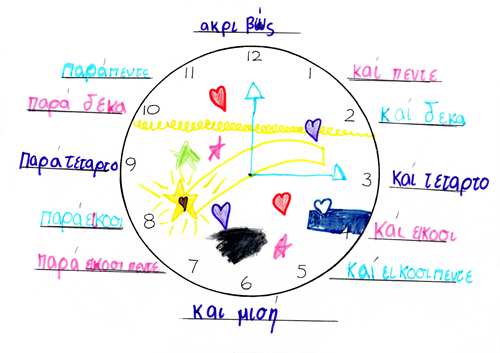By the end of Year 6, students use spoken and written Greek to exchange personal information such as, Οι δάσκαλοί μου είναι ..., Έχω πολλούς φίλους, Αγαπώ τη μουσική, describe feelings and express preferences, for example, Μου αρέσει να παίζω σκάκι στο κομπιούτερ. When participating in collaborative activities, transactions and classroom routines, they ask and respond to questions (for example, Πώς σε λένε;), plan collaboratively, and make suggestions and statements such as, Τώρα το βρήκα! When interacting, students use key features of pronunciation and intonation, including accents (for example, η οικογένειά μου, η and ή). They obtain and compare information from a variety of texts related to aspects of daily life and events (for example, Τι καιρό θα κάνει σήμερα;). They present information about their personal world in different formats (for example, Μου αρέσει ο τραγουδιστής ...). They respond to the storyline and characters encountered in texts and create and perform simple imaginative texts using familiar language such as, Ο αγαπημένος μου δάσκαλος ... . They use verbs (for example, Έχω, θέλω, είμαι, ήταν, θα είναι), nouns (for example, ο άνθρωπος, η μητέρα, το παιδί), adjectives (for example, καλός, μεγάλος, ωραία) and conjunctions to construct and expand sentences and apply basic rules of spelling and punctuation, such as question marks, capital letters, commas, exclamation marks and speech marks. They translate and interpret simple texts, identifying words that are not easily translated (for example, το φιλότιμο) and create bilingual texts for the classroom and school community. They compare ways of communicating in Greek and English to identify similarities and differences and suggest how culture influences language use.
Students identify and reproduce orally and in writing letter clusters, and the digraphs/diphthongs. They identify the relationship between language choices, and the audience and purpose of different text types. They describe the importance of register in different contexts and situations (for example, Έλα / Ελάτε σπίτι μου, Σε / σας περιμένω). They identify the impact of Greek on other languages, especially English (for example, το κινητό, ο υπολογιστής), and appreciate the dynamic nature of Greek, identifying changes that have occurred due to new technologies and knowledge. They describe ways that identity and communication are directly related to language and culture, for example, greeting familiar people by kissing them on both cheeks.



